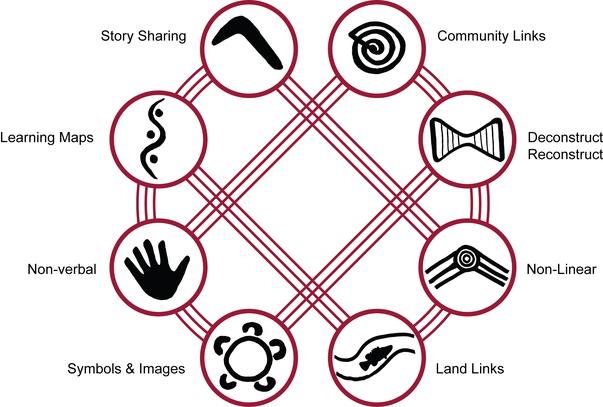Tell a story.
Make a plan.
Think and do.
Draw it.
Take it outside.
Try a new way.
Watch first, then do.
Share it with others.
8 Aboriginal ways of learning is a framework that allows teachings to include Aboriginal perspective through these learning techniques. These links are:
~ Story sharing: connect through narratives that are shared.
~ Learning maps: visuals are used to map out learning processes to follow.
~ Non-verbal: without using words learning is applied through seeing, thinking, acting.
~ Symbols and images: use images to gain knowledge with art, land and objects.
~ Land links: Context changes to local land/place and linked to learning.
~ Non-linear: Build different ideas and perspectives to gain deeper understanding.
~ Deconstruct/Reconstruct: Working with wholes then breaking down into parts.
~ Community links: Connecting with real-life community and learning from local views.
(8 Aboriginal ways of learning factsheet, May 2012. Retrieved from http://intranet.ecu.edu.au/__data/assets/pdf_file/0016/510073/8-Aboriginal-ways-of-learning-factsheet.pdf)


